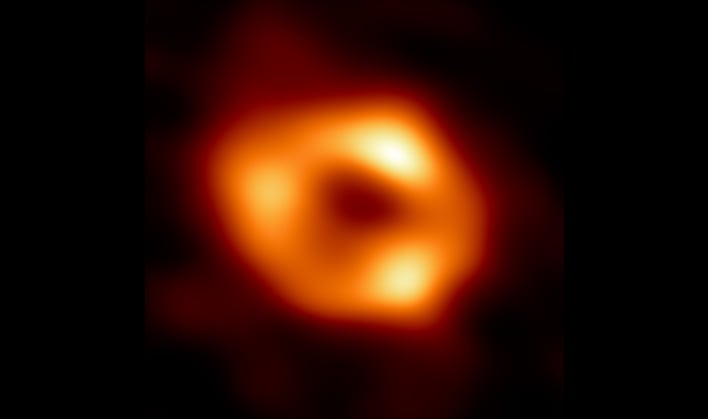Milky Way's Supermassive Black Hole Pictured For First Time Ever And It's Mesmerizing

During a live stream event hosted by the U.S. National Science Foundation (NSF), the EHT Collaboration discussed how they unveiled the first image of the supermassive black hole at the center of our galaxy. The group said that the results provide overwhelming evidence that the object is indeed a black hole and will provide valuable clues about how a black hole works. Black holes are thought to exist at the center of most galaxies.
Before the image was released today, scientists and astronomers had detected stars orbiting around something invisible, compact, and very massive at the center of the Milky Way. This information was a strong indication that the object, known as Sagittarius A*, is a black hole. The image revealed today is said to provide the first direct visual evidence of that being true.
The breakthrough follows the EHT collaboration's 2019 image of another black hole, called M87*, which is located at the center of the more distant Messier 87 galaxy. While M87 and Sgr A* are very similar, Sgr A* is a thousand times smaller and less massive than M87*.
"We have two completely different types of galaxies and two very different black hole masses, but close to the edge of these black holes they look amazingly similar," remarked Sera Markoff, Co-Chair of the EHT Science Council and a professor of theoretical astrophysics at the University of Amsterdam, the Netherlands. "This tells us that General Relativity governs these objects up close, and any differences we see further away must be due to differences in the material that surrounds the black holes."
During a live stream event this morning, the panelists stated that while they would not be able to image a quasar with this technique, they are capable of capturing images of M87* and Sgr A*. They added that even though the image may appear blurry, it is one the sharpest images ever captured of a black hole.
Top Image Courtesy of National Science Foundation

